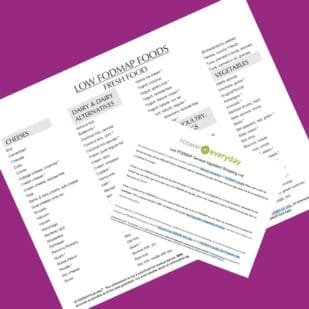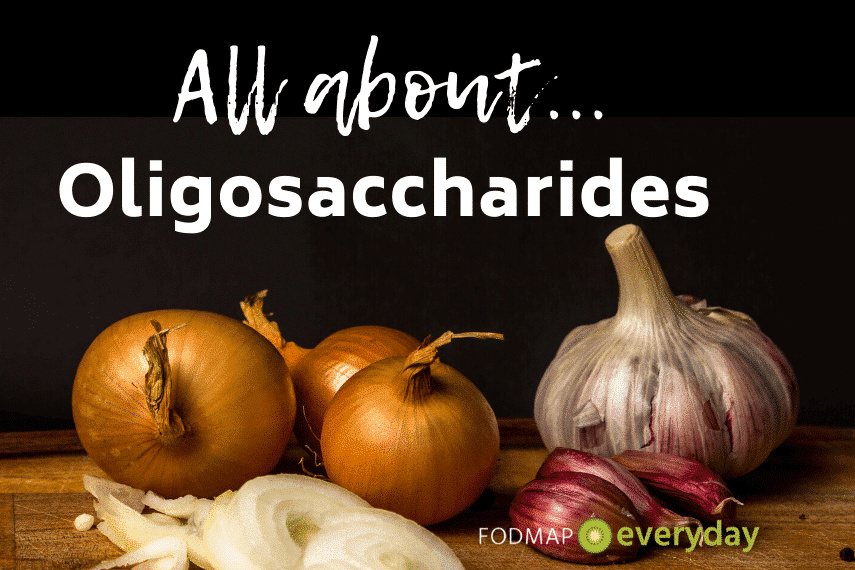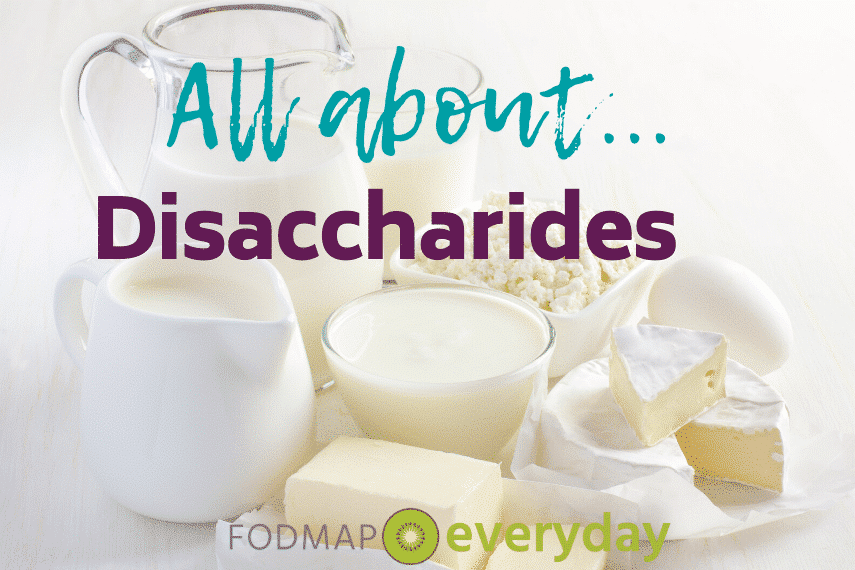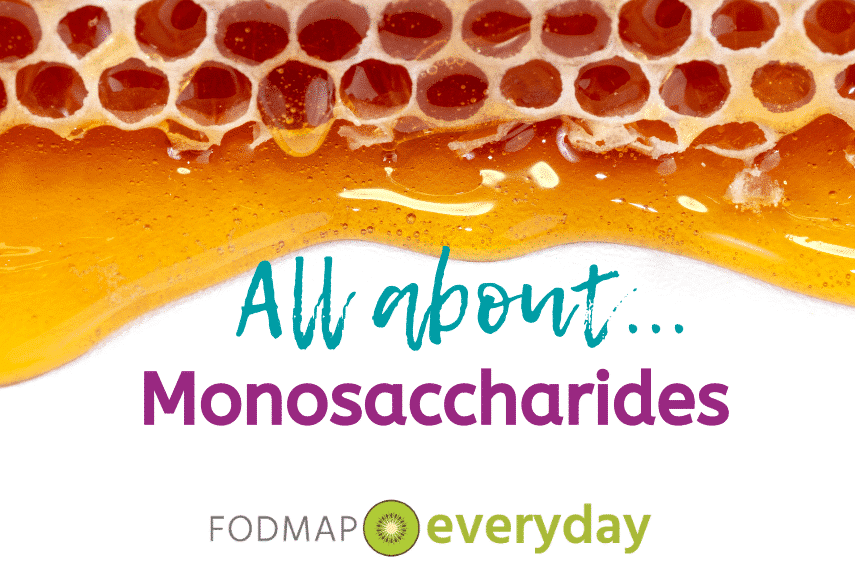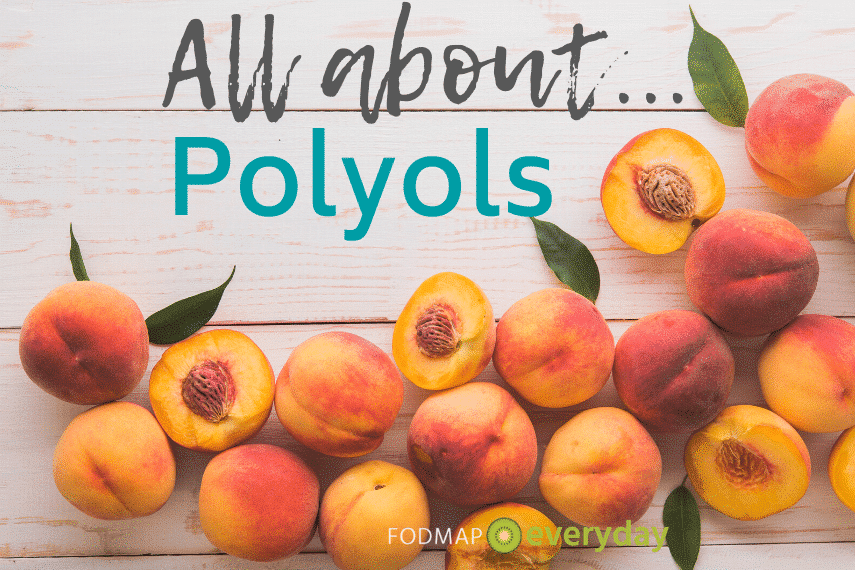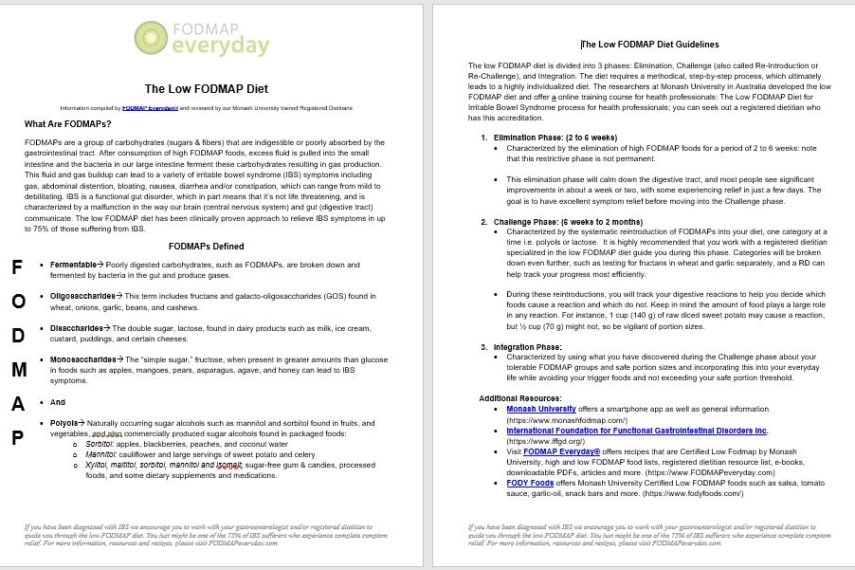What Does FODMAP Stand For?
FODMAP is an acronym for Fermentable Oligosaccharides, Disaccharides, Monosaccharides and Polyols.
FODMAPs are a group of short-chain carbohydrates that are indigestible or poorly absorbed by certain people.
As FODMAPs travel through the gastrointestinal tract, they draw excess fluid into the small intestine and generate gas when they are fermented by bacteria in the large intestine (colon).
This fluid and gas build-up can lead to symptoms of irritable bowel syndrome (IBS) such as abdominal bloating and distension, pain, flatulence and nausea, as well as diarrhea (IBS-D), constipation (IBS-C) or both (IBS-M; mixed).
While IBS is considered a functional gastrointestinal disorder, which in part means that it’s not life-threatening, we do not want to understate the amount of pain and discomfort involved.
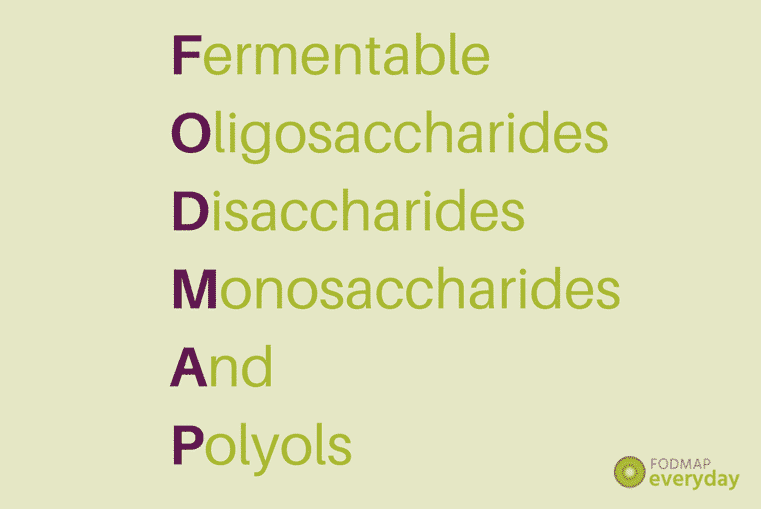
If you are living with IBS you know all too well that the abdominal pain and gut symptoms can keep you from living a full life. At times, you may not even be able to pull on a pair of pants due to excruciating pain or leave the house for fear of a sudden “accident.”
The Low FODMAP Diet
Researchers at Monash University in Australia discovered something very important in clinical trials:
A diet low in FODMAPs (commonly known as a the “low FODMAP diet” or ‘FODMAP Elimination Diet”) has been shown to relieve gut symptoms in up to 75% of those with IBS – and that is about 1 in 7 people worldwide.
The low FODMAP diet is a 3-Phase diet: an initial Elimination Phase, then the Challenge Phase and finally the longer term Integration Phase.
How Do You Know What FODMAPS Are In Food?
How do you know which foods to eat and which to steer clear of as you embark on the diet? You cannot tell what FODMAPs are in a food without lab testing. This is why downloading the Monash University smartphone app, and the FODMAP Friendly smartphone app are necessary when following the low FODMAP diet. These are the two entities doing the original research and considered primary resources.
Let’s take it one FODMAP at a time, with an example of a small sampling of high FODMAP foods, which are common triggers for those who poorly absorb them – but always remember that the diet is very dependent on portion size. So there are foods that can be considered “high FODMAP”, like almonds, which also have low FODMAP serving sizes; this means you can enjoy them, even during the initial, more restive Elimination Phase. Much more complete information can be found within the aforementioned apps.
Fermentable
This refers to the process (fermentation) by which bacteria break down organic compounds and use them for growth and reproduction. Poorly digested carbohydrates like the FODMAPs below are the perfect fuel for this bacterial feast!
Oligosaccharides
This term “fermentable oligosaccharides” encompasses fructans and galacto-oligosaccharides – sometimes referred to as Oligos and galacto-oligosaccharides themselves as GOS.
Common foods that can be high in these FODMAPs are wheat, rye, barley, traditional wheat-based pasta, onions (and other alliums, like leeks), garlic, Brussels sprouts, ripe bananas, blueberries, zucchini, baby spinach, cantaloupe, honeydew, artichokes, beetroot, grapefruit, kiwi, Savoy cabbage, red cabbage, lentils, chickpeas and other beans and legumes, tofu, cashews, walnuts and some other nuts.
You can see that Oligos are found in a wide variety of foods. We rely on lab testing and the Monash University and FODMAP Friendly apps to guide your knowledge and choices.
Statistically fructans are the FODMAP that trigger the most IBS symptoms in most people. It can be confusing, especially at first, because wheat, which contains gluten, also contains fructans, but the low FODMAP diet is not a gluten-free diet. It is lower in fructans. Many people who think they are reacting to gluten discover that they have been reacting to fructans all along. A Registered Dietitian can guide you through this discovery process. You read more in our article How To Choose Low FODMAP Bread.
Disaccharides
This refers to the double sugar, lactose, which is found in dairy products such as milk, ice cream, custard, puddings and certain types of cheese. The low FODMAP diet is not lactose-free or dairy-free, but it is low(er) in lactose. There are, in fact, many cheeses and dairy products that do have low FODMAP serving sizes such as brie, cottage cheese, many hard cheeses, conventional yogurt and others. Read more in our article, Lactose, Dairy & The Low FODMAP Diet.
Monosaccharides
This references the “simple sugar,” fructose. Fructose is a problem when it is present in greater amounts than glucose in foods such as apples, mangoes, pears, common round tomatoes, broccoli, asparagus, agave and honey – and high fructose corn syrup.
Polyols
More commonly known as “sugar alcohols,” these compounds are neither sugar nor alcohol. They do taste sweet, but they won’t get you drunk! Polyols occur naturally in many fruits and vegetables, and they’re also commercially produced and added to packaged foods and other items.
Two occur naturally in food – sorbitol and mannitol. Sorbitol is found in apples, parsnips, apricots, green beans, turnips, bok choy, eggplant, blackberries, yellow peaches, and green cabbage to name a few.
Mannitol is found in cauliflower, Enoki mushrooms, celery, sweet potatoes and other foods.
Commercially manufactured polyols such as xylitol, maltitol, and isomalt are found in sugar-free gum, candy and other processed foods, as well as some dietary supplements and medications. Various polyols can affect gut bacteria differently.
Unfortunately, you won’t see the terms fructan or disaccharide on a food label, so what can you do? Read “How To Read Food Labels for the Low FODMAP Diet”
Foods That Contain Multiple FODMAPs
There are also foods that contain more than one FODMAP, according to Monash University. Here is just a sampling:
- Snow Peas: contain GOS, mannitol and fructans
- Granny Smith & Pink Lady Apples: contain fructose and sorbitol
- Watermelon: contains fructose, mannitol and fructans
- Asparagus: contains fructose and fructans
- Butternut Squash: contains GOS and mannitol
- Fennel Bulb: contains mannitol and fructans
- Coconut Water: contains sorbitol and fructans
- Cherries: contain sorbitol and fructose
- Nectarines: contain sorbitol and fructans
- Black Diamond Plums: contain sorbitol and fructans
- Oats: contain GOS and fructans
- Pistachios: contain GOS and fructans
Foods With No FODMAPs Or Traces Of FODMAPs
There are also many foods that actually contain either no FODMAPs or just traces of FODMAPs, according to Monash University. Please note that some of these foods have been lab tested multiple times only to show different FODMAP content in subsequent tests. Read this article to explain why this is not a contradiction. Here are examples of foods that have very generous low FODMAP serving sizes, due to their very low, or absent, FODMAP content:
- Chives
- Scallion greens
- Cucumbers
- Grapes
- Oranges
- Grains like rice and quinoa
- Green and black olives
- Sweeteners like white and brown sugar
- Strawberries
- Carrots
- Red Bell Peppers
- Many types of lettuce
- Peanuts
- Proteins like beef, chicken and eggs
- Fats: any pure oils, such as avocado, peanut, coconut, olive, vegetable etc.
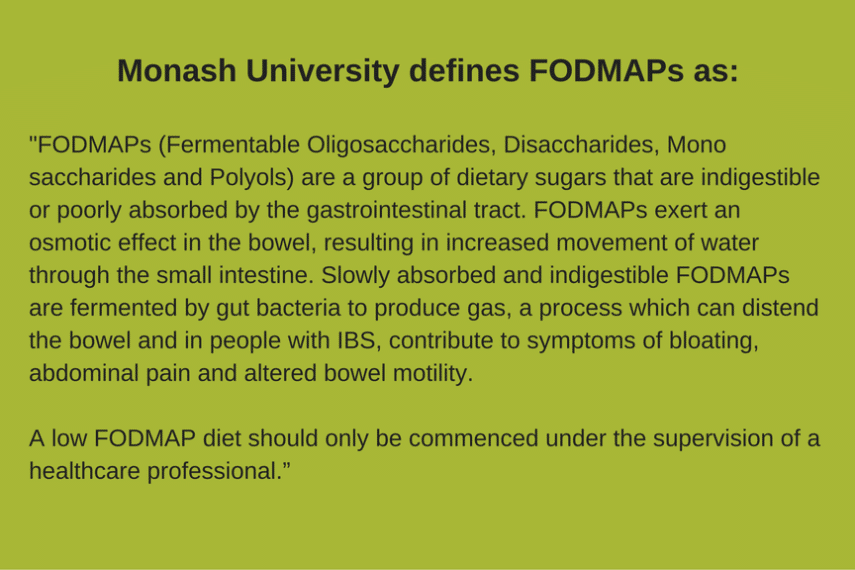
How To Follow The Low FODMAP Diet
Read about The Low FODMAP Diet and learn how FODMAP Everyday® can help you eat well and stay symptom-free.
Sign up for our Newsletter and get our Quick Start Series to help guide you step by step.
You should download both the Monash University Low FODMAP Diet App, and the FODMAP Friendly smartphone app, which will give you access to regularly updated lists of foods and their FODMAP content. You can also download our FODMAP Everyday Low FODMAP Reference List on our Resource page.
We highly recommend you work with a low FODMAP trained dietitian when starting out on the low FODMAP diet. You can find one in our Registered Dietitian Directory.
We highly recommend you work with a low FODMAP trained dietitian when starting out on the low FODMAP diet.
Free Printable Low FODMAP Diet Description
You can download one for free here.
Download for Free
Free Printable Low FODMAP Foods List
